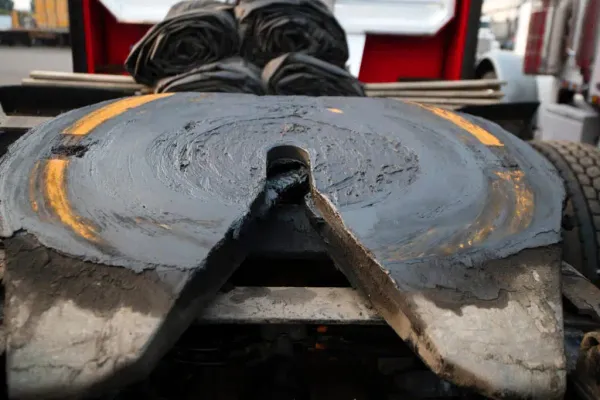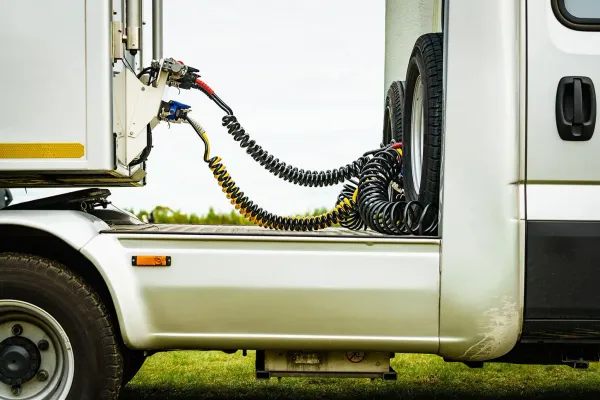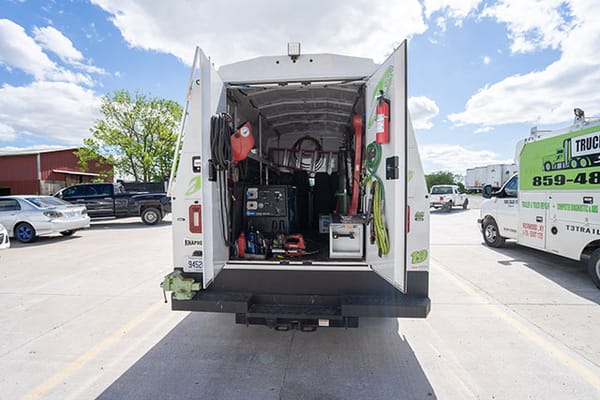Emergency Repairs: How To Keep Your Cool When The Wheels Come Off

There’s a moment every truck driver dreads. It might come in the dead of night, on a lonely stretch of interstate, or at the tail end of a long haul when home is just hours away. It starts with a sound—maybe a metallic rattle, a sudden pop, or a dragging vibration under the floor. Then the engine stutters, a warning light flashes, or worse, something lets go entirely. You pull over, get out, and there it is: a shredded tire, a snapped airline, or a piece of your undercarriage sitting in the gravel.
This is when it gets real.
Emergency repairs in the trucking world are the great equalizer. It doesn’t matter how new your rig is, how seasoned your drivers are, or how dialed in your maintenance schedule might be—at some point, something will go wrong on the road. And when it does, how you respond can mean the difference between a minor hiccup and a full-blown operational disaster.
The real story isn’t about the breakdown itself. It’s about what happens next.
The Psychology of the Breakdown
When a truck breaks down mid-route, there’s more at stake than just the mechanical issue. There’s a psychological shift that happens—to the driver, to the dispatcher, to the customer waiting at the end of that run. Time compresses. Stress spikes. Patience disappears.
Drivers, especially those alone on the road, feel this acutely. They’re managing more than a repair. They’re managing isolation, fatigue, uncertainty, and in some cases, fear. Is this going to be a quick fix or an all-nighter? Will I miss my delivery window? Am I safe here?
Meanwhile, on the operations side, dispatchers and fleet managers are suddenly pulled into a new reality. Routes need reshuffling. Customers need updates. And someone needs to make quick decisions with limited information.
The pressure is real. But panic is optional.
Keeping your cool doesn’t mean being unaffected. It means being prepared—mentally, procedurally, and operationally—for the fact that in this business, things will go sideways. Cool heads don’t eliminate emergencies, but they make sure emergencies don’t eliminate your business.
Situational Awareness Starts Before the Breakdown
While you can’t predict every roadside failure, you can create the conditions that help people respond well when one happens. And that starts long before the breakdown occurs.
Drivers who are confident in their chain of support react differently in a crisis. A driver who knows who to call, what to say, and what the likely next steps are won’t freeze up or make rash decisions. They’ll gather information calmly, relay it clearly, and follow through without getting overwhelmed.
But that kind of calm doesn’t appear out of nowhere. It comes from culture.
Fleets that treat drivers like partners, that invest in communication protocols, and that foster a no-blame approach to emergency calls—those are the fleets that handle breakdowns with grace. They’re not winging it. They’ve rehearsed this play before.
So when a wheel comes off—literally or figuratively—the response is swift, direct, and coordinated. Not chaotic.
The First Five Minutes Matter Most
What a driver does in the first few minutes after a failure sets the tone for everything that follows. This isn’t just about safety—though that’s paramount. It’s about setting in motion a process that minimizes downtime, manages expectations, and maintains professionalism in the face of adversity.
A calm driver doesn’t just check the damage. They document it. They radio in clearly. They position the truck safely, think about visibility, and consider what the next person on scene—whether it’s a mechanic, a tow truck, or highway patrol—will need to know.
The same applies to dispatchers. A cool-headed dispatcher won’t waste time pointing fingers or second-guessing the driver. They’ll go to their playbook, check service coverage in the area, begin the call-outs, and, most importantly, keep the driver informed.
This isn’t magic—it’s habit. And it’s built through experience, repetition, and a shared understanding that everyone is working toward the same goal: get the truck moving again safely, with as little disruption as possible.
Decision Fatigue and the Cost of Rushing
One of the most overlooked risks during an emergency repair is decision fatigue. Under pressure, people tend to make reactive choices: the closest shop, the cheapest tire, the first vendor to answer the phone. But trucking is a game of consequences, and the cheapest choice now is often the most expensive later.
I’ve seen it happen a hundred times. A temporary patch on a failing hose leads to a bigger failure down the road. A quick-fix part bought off-brand causes a compatibility issue back at the shop. A tow to a sketchy garage turns into a four-day parts wait because someone didn’t ask the right questions up front.
The real skill isn’t choosing quickly—it’s choosing wisely under pressure. That’s where experienced operations teams and empowered drivers shine. They don’t just solve the immediate problem. They solve it in a way that doesn’t create three more problems down the line.
And they’re not afraid to slow down just enough to make a better call.
The Human Cost Behind the Breakdown
It’s easy to talk about downtime in terms of hours and dollars. But every breakdown has a human cost too, especially in long-haul operations. When a driver is stranded, they’re not just delayed—they’re removed from their rhythm, from rest, from meals, from family.
Fleets that forget this lose good people.
Keeping your cool in an emergency isn’t just about logistics. It’s about leadership. It’s about checking in with the driver not just for status, but for well-being. Did they eat? Are they safe? Do they need a hotel? Are they running low on hours and feeling pressured?
These questions matter. They show the driver that their company sees them as more than a unit number. And that kind of support often does more for driver retention than any bonus ever could.
What Breakdowns Reveal
There’s a saying I’ve come to believe in this line of work: trucks don’t fail in emergencies—emergencies reveal where systems were already failing.
The quality of your vendor relationships. The clarity of your communications. The thoroughness of your maintenance routines. The depth of your bench when things go sideways. A single breakdown will put all of that under a spotlight.
Handled poorly, it becomes a cascade: missed loads, angry customers, frustrated drivers, damaged equipment. Handled well, it becomes a blip—just another challenge in a business that’s full of them.
What separates the two outcomes isn’t luck. It’s preparation, clarity, and composure.
Final Thoughts
Emergency repairs will always be a part of trucking. No fleet, no matter how well managed, is immune to the chaos of the road. But that doesn’t mean we’re powerless in the face of them.
Keeping your cool when the wheels come off isn’t about denying the urgency of the situation—it’s about rising to meet it without making it worse. It’s about trusting your people, relying on your processes, and remembering that how you handle the hard moments says more about your operation than how you handle the easy ones.
The road will always throw curveballs. But in trucking, as in life, the breakdown isn’t the defining moment.
What you do next is.



